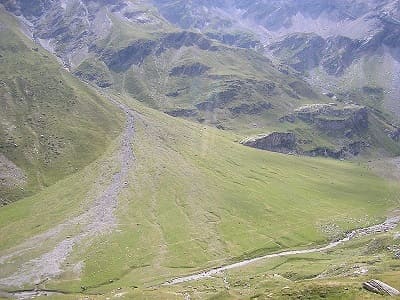Torrential modeling
The torrents are surface waters that have a fixed channel but their flow is intermittent, since the water circulates only when there is abundant rainfall.
They appear in areas with a strong slope break between an abrupt and a flat area, which causes great erosion. The energy of the water is very great, as was verified at the “Las Nieves” campsite in Biescas in August 1996, where 87 people died when they were buried by the avenue that flooded the campsite that was located in the alluvial fan.
A torrent is divided into three parts:
Reception basin
It is the area where rain or melt water is collected. ![]() It has a steep slope, so the water flows at high speed and produces intense erosion.
It has a steep slope, so the water flows at high speed and produces intense erosion.
Drainage channel
It is the middle section. Here the channel narrows and deepens when eroding vertically, since the slope is high and the water circulates quickly. Although the water causes erosion, the most characteristic of this section is the transport of materials.
Dejection cone or alluvial fan
The slope becomes much less in the last section of the torrent. ![]() Water loses energy and sedimentation of the materials it has transported occurs, forming a structure that is fan-shaped.
Water loses energy and sedimentation of the materials it has transported occurs, forming a structure that is fan-shaped.
Video: The torrential avenues.
